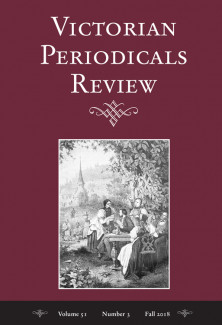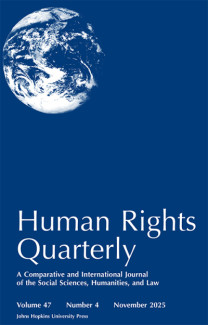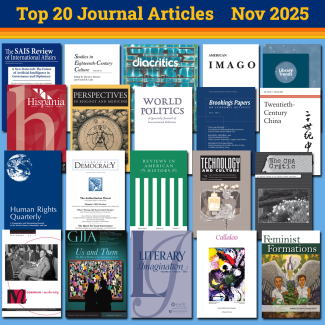
Johns Hopkins UniversityEst. 1876
America’s First Research University
Borders, Victorian Style

The issue of borders can sometimes dominate modern headlines. However, a special issue of Victorian Periodicals Review in Fall 2018 demonstrated that the topic has a rich and complicated history. Guest edited by University of Freiburg (Germany) colleagues Barbara Korte (English Literature) and Stefanie Lethbridge (English Literature and Cultural Studies), the issue addressed the diversity of Victorian encounters with borders and border crossings, investigating how they represented and negotiated these encounters in a medium that was deeply embedded in their lives. Korte and Lethbridge shared some more thoughts on the issue, which sprung from the 2017 Research Society for Victorian Periodicals (RSVP) Conference, in this Q&A.
What was the process of bringing together papers from the 2017 RSVP Conference to this print issue?

With the current political climate over borders, how important is taking a look at the history of this issue?
The political discussion actually took on considerable heat while we were finalising our conference plans – so much so, that our conference website was blocked for a while in the US, apparently on account of the website title “Borders and Border Crossings”. Whatever the reason for the blockage, the problem certainly disappeared when we changed the website title to a more innocuous version that contained no reference to borders.
Our current situation tends to conjure up images of fences and walls when we talk about borders. Looking at borders outside of current political pressures frees us to see the many facets of borders and border crossings. The contributions to the VPR special issue explore a wide range of aspects connected to borders: national borders of course, but also social boundaries of gender and class, fruitful conversations across borders as news, ideas, even page layouts move from one country to another, and the productive uses of borders in page-layout and periodical design. Investigating the historical situation also brings home the fact that any given border or border crossing does not have one effect and one only. As women were crossing national borders in increasingly independent travel, they were also crossing gender boundaries. At the same time, such border crossings often cemented a British sense of identity and in this sense confirmed borders.
How can you compare the understanding of borders in Victorian times with modern perspectives?
Victorians would have recognized our concerns with border transgressions: as travel opportunities improved even ordinary people were beginning to experience the world as global space. They also struggled with the effects of migration (for instance Irish workmen coming over to find employment in the English industrial centres) or they felt threatened by people whose border crossings seemed to destabilize current systems of social organisation (like women traveling independently). And just like us, Victorians were happy to arrange and defend borders of their own making, while they objected strongly to others interfering with their rules. So, not much has changed? Yes and no. Retrospectively, it seems that over the course of the nineteenth century Victorians were slowly moving towards increasingly permeable borders. At the beginning of the 21st century we seem to be moving in the other direction.


